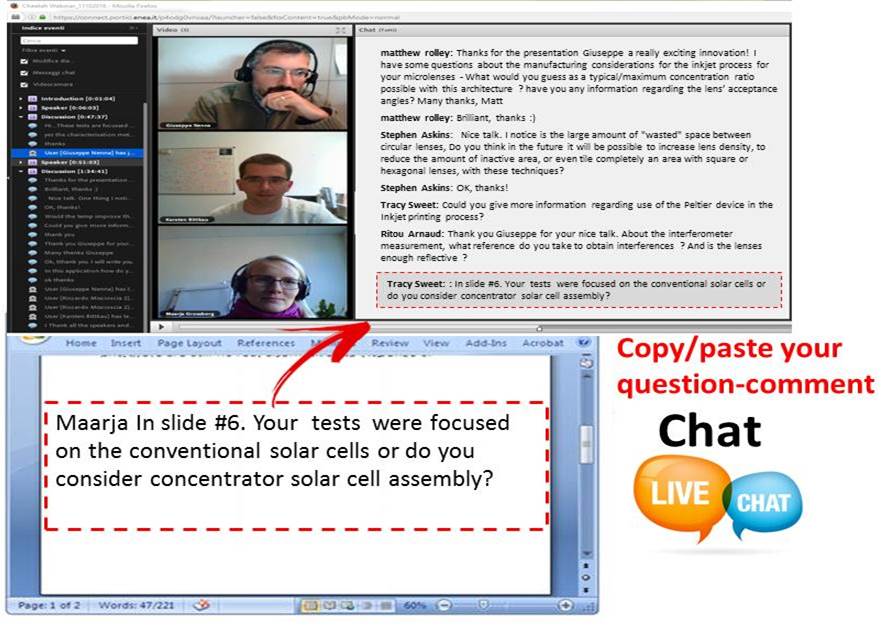highlights in this page
webinar > How to access @ CHEETAH webinar?
How to participate @ CHEETAH WEBINARs?
First step -- > registation
If you want to attend our free webinars you have to create you account by registering in our CHEETAH KNOWLEDGE EXCHANGE Platform as first!
- The event host will process your request and will provide more information via email.
- Quick registration is offered all who already registered to the platform and they have got their credentials to access.
- Registered users can also have access to videos and others restricted web areas.
For more technical details see specific section

CHEETAH WEBINAR event takes place by connecting via Adobe Connect to a virtual room. We utilize two virtual rooms:
- CHEETAH WEBINAR room: for events with less than 150:
- CHEETAH PLENARY room: for events up to 300 participants or more (CHEETAH PLENARY room)
Please access by using a:
- Uniform Resource Locator (URL) -- > web address
- room passcode --> an alphanumeric code / password to access
that you can find in your email confirmations/reminders. If you are already registered in CHEETAH KNOWLEDGE EXCHANGE PLATFORM your will also find this information in the event web page. Another good reason to register.
(see Technical info section for extra details )
How can audience interact with the speaker(s)?
- Speakers comment their slides displayed in high resolution directly on your screen.
- Webcams and microphones allow the simultaneous view of the speakers, event chair and local audience.
- Local participants interacts with speakers and other participants as usual. On line participants interactively join the discussion during question time via "live chat".
- On specific request, questions can be proposed to the speaker and event chair via microphone/web cam, also fron on-line participants, particuarly when they need of a more tight interaction with the speaker(s) and other on site / on line participants.
Tips /golden rules to ask your question or propose your comments by chat
Go ahead of time in preparing your question/comment
- Write text directly in the chat only for very simple question
- Prepare your questions & comments in a text file or word document

- Check what you written, correct typos and other mistakes before submitting your question
- Indicate any information useful to identify the speaker, when more that one participated to the webinar and the part of the lecture you are referring to (slide number, title of the slide, etc…).


